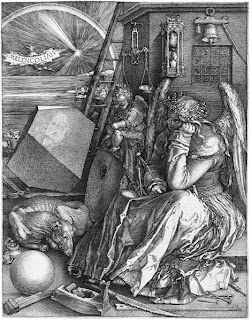曲:Wolfgang Amadeus Mozart (1756-1791)
題:Als Luise die Briefe ihres ungetreuen Liebhabers verbrannte, KV520 (1787)
(露易絲燒負心漢的情書)
Erzeugt von heißer Phantasie,
In einer schwärmerischen Stunde
Zur Welt gebrachte, geht zu Grunde,
Ihr Kinder der Melancholie!
Ihr danket Flammen euer Sein,
Ich geb' euch nun den Flammen wieder,
Und all' die schwärmerischen Lieder,
Denn ach! er sang nicht mir allein.
Ihr brennet nun, und bald, ihr Lieben,
Ist keine Spur von euch mehr hier.
Doch ach! der Mann, der euch geschrieben,—
Brennt lange noch vielleicht in mir.
In einer schwärmerischen Stunde
Zur Welt gebrachte, geht zu Grunde,
Ihr Kinder der Melancholie!
Ihr danket Flammen euer Sein,
Ich geb' euch nun den Flammen wieder,
Und all' die schwärmerischen Lieder,
Denn ach! er sang nicht mir allein.
Ihr brennet nun, und bald, ihr Lieben,
Ist keine Spur von euch mehr hier.
Doch ach! der Mann, der euch geschrieben,—
Brennt lange noch vielleicht in mir.
因炙熱的幻夢而生,
在激情的時刻
來到這世界,回去吧!
你們這些徒增憂鬱的孩子!
你們既因火焰而生,
就讓你們回到火焰的懷抱,
還有那一切激情的歌詠,
唉!又不只為我一人而唱。
燃燒吧!很快,心愛的,
就此銷聲匿跡。
只怕,你們的作者──
還要在我心裡燃燒許久。
在激情的時刻
來到這世界,回去吧!
你們這些徒增憂鬱的孩子!
你們既因火焰而生,
就讓你們回到火焰的懷抱,
還有那一切激情的歌詠,
唉!又不只為我一人而唱。
燃燒吧!很快,心愛的,
就此銷聲匿跡。
只怕,你們的作者──
還要在我心裡燃燒許久。
一個女人站在壁爐前面碎碎念,鏡頭繞過屋內一圈,旁無他人。難道她在自言自語?鏡頭由她的側面拉近,看到她手裡捧著一疊書信,並一張一張地往爐火裡丟。原來她正在跟一堆情書講話。歌詞就是她一邊燒情書,一邊對一些紙張所講的話。
她詛咒這些情書:去死吧!你們這些悲劇的種子,去死吧!(geht zu Grunde! 莫札特連續用了兩次。)你們在衝動的時刻因炙熱的夢幻而生,你們既然身受火焰般熱情的生育之恩,現在我就讓你們回到熱情火焰的懷抱。你們身上這些誇張的情歌綿綿,原來不只是為我一人而唱。燒吧!你們的愛很快就要在這裡銷聲匿跡。
然而,在最後一句,她卻必須承認,寫這些情書的男人不知道還要在她心中燃燒多久。
歌詞裡的代名詞 "ihr", "euer", "euch",所指涉的都是這些情書。另外,值得注意的是,"Ich geb' euch nun den Flammen wieder" 這句。[7] 把它錯譯為「而今我把火焰還給你們」,是把與格(den Flammen)跟受格(euch)弄反了,應該是「而今我把你們還給火焰」。
後記 20130702
我覺得最難理解的是 "ihr Kinder der Melancholie"。光是 "ihr Kinder" 還好,"ihr" 跟 "Kinder" 是同位語。雖然 "Kinder" 在德語裡,不見得一定要是婚生或非婚生的生物學關係,就像英語 "my son" 有時候甚至於可以用來稱謂陌生的成年人;"Kinder" 也可用來做為對一群人的稱呼,甚至於是一群事物。但是因為前面有 "zur Welt gebrachte",所以把情書解釋為因情愛而生的孩子,是合理的,
問題在於,"Kinder der Melancholie",亦即 "children of melancholy"。光是把 "Melancholie" 解釋為一般譯的「抑鬱」,很難做為「這些孩子」本身的屬性。因為我無法揣摩「抑鬱的孩子」在這首詩裡扮演什麼角色。
靈機一動,會不會也有個希神叫做 "Melancholia",祂也生了一些小孩,不知道幹了什麼事情…結果是「查無此神」。
Emoticon representation of the four temperament types. Phlegmatic (top left), choleric (top right), sanguine (bottom left), and melancholic (bottom right).
但是左思右想,這還是沒什麼助益。
要是訴諸希臘字源,則是「黑色的膽汁」。咦,黑色不是就信燒焦時的顏色嗎?…但還是拉不上關係。
又,有一些畫家也作了一些畫,其中 Albrecht Dürer 畫了以下這張,想要呈現 Melancholie 的特質。據說這是內向的、沉思的、富於思考的,甚至於是鑽牛角尖的。
Melancholia I The bat-like creature flying through a night sky declares the subject of this famous engraving: Melancolia I. That dark temperament is personified by a female figure seated in the foreground. The winged infant beside her is a 'genius' (in the ancient sense, meaning an accompanying spirit).
Melancholy has wings and from her belt hang keys and a money bag, symbolizing power and wealth. She is surrounded by measuring instruments. Above her head is a panel of 'magic' numbers (they add up to 34 in all directions). At her feet are the tools that can fashion the material world. Yet she does nothing: lost in thought, she turns away from the light.
Renaissance philosophers had suggested a new interpretation for melancholy, as the temperament of genius (in the modern sense). Melancholy was possessed by artists, in whom 'Imagination' predominates; 'Reason' dominates scholars; while the final stage of 'Spirit' was the preserve of theologians. If this interpretation is correct, Dürer has presented us with a portrait of his own temperament as an artist.
左思右想,單獨來看這句好了,"Geht zu Grunde, ihr Kinder der Melancholie!" ,她講這句話的動機到底是什麼?如果從動機出發,試問,「我為什麼非要把這堆信燒掉不可?」
如果我留著這堆信,它們只會讓我執著(Melancholie)於這些愛恨情仇,只會讓我在這些思緒裡鑽牛角尖(Melancholie)。那我不如毀了它們,雖然我知道,不會那麼容易,就算燒掉了,殘留在我心裡的東西不知還要燒多久。
從這個角度來想的話,倒是可以找到 "Melancholie" 在這首詩裡的位置。「抑鬱」並非「孩子自身」的屬性,憂鬱的不是孩子,而是擁有這些孩子的人。不是「憂鬱的孩子」,而是「教人憂鬱的孩子」。也就是說,「去死吧!留著你們,只是徒增憂鬱」,或是「離開我吧!你們這些徒增憂鬱的孩子」。
Related Articles
[a] 2013-06-22 Mozart, Abendempfindung, KV523
http://kolmogolovi.blogspot.tw/2013/06/mozart-abendempfindung-kv523.html
External Links
[1] Als Luise die Briefe ihres ungetreuen Liebhabers verbrannnte, Wikipedia
http://en.wikipedia.org/wiki/Als_Luise_die_Briefe_ihres_
ungetreuen_Liebhabers_verbrannte
[2] Nebenprodukt oder Kunstwerk? - Mozarts Lieder als die unbekannten Schönen,
Peter Pasdzierny , Monday, 2010-01-25
http://www.youtube.com/watch?v=XgCDP4carIM
Wolfgang Amadeus Mozart (1756-1791) Simone Brueckner - Mezzo Soprano ** Maria Rost - Piano Brueck Records (c)[4] Mozart Als Luise die Briefe ('Erzeugt von heisser Phantasie'), K. 520-Elisabeth Schwarzkopf (1956)
home: http://simonebrueckner.kulturserver.de/
http://www.youtube.com/watch?v=DfUQMzHerq0
Dame Elisabeth Schwarzkopf, DBE (9 December 1915 -- 3 August 2006) was a German-born Austrian/British soprano opera singer and recitalist. She was among the most renowned opera singers of the 20th century, much admired for her performances of Mozart, Schubert, Strauss, and Wolf.[5] Arleen Auger sings "Als Luise die Briefe"... by Mozart, with Katja Phillabaum, piano
http://www.youtube.com/watch?v=fV65k4AFplE
These are individual songs from a vocal recital at the University of Wisconsin-Milwaukee, June 20, 1984. The entire program includes selections by Mozart, Schubert, Schumann, Debussy, Wolf and Strauss. Arleen Auger sings "Als Luise die Briefe ihres ungetreuen Liebhabers verbrannte" by Mozart with Katja Phillabaum piano UWM University of Wisconsin Milwaukee vocal recital soprano opera "Classical Music" "Wolfgang Amadeus Mozart"[6] Als Luise die Briefe Accompaniment - Mozart K.520 - Eb (這是卡拉 OK)
http://www.youtube.com/watch?v=u2rRaYSaQlE
[7] 黃于真, 黃于真(獨唱)音樂會樂曲解說, 國立屏東教育大學音樂系碩士論文, 2011, p.32
http://etd.npue.edu.tw/ETD-db/ETD-search/getfile?URN=etd-0617111-225309&filename=etd-0617111-225309.pdf

.jpg)
沒有留言:
張貼留言